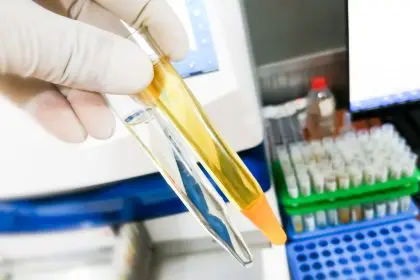The practice of urinating after intimate activity plays a crucial role in preventing infections and maintaining urinary health. Understanding this simple but vital health measure can significantly impact long-term wellbeing, particularly in preventing urinary tract infections (UTIs) and maintaining optimal intimate health.
The infection prevention mechanism
When bacteria enter the urinary tract during intimate activity, they can multiply rapidly, leading to infections. The urethra’s natural cleansing process through urination helps eliminate these bacteria before they can cause problems. This process proves especially important for individuals with shorter urethras, who face higher infection risks.
Urinary tract infections affect millions annually, with intimate activity being a common trigger. These infections can cause significant discomfort and may lead to more serious complications if left untreated. The simple act of urination after intimacy can substantially reduce these risks by flushing out potentially harmful bacteria before they have a chance to travel up the urinary tract.
Understanding infection patterns
Statistics reveal that urinary tract infections affect up to 60% of individuals at some point in their lives. Physical anatomy plays a significant role in susceptibility, particularly the length of the urethra. Those with shorter urethras face higher risks due to the decreased distance bacteria must travel to reach the bladder. Frequency of intimate activity, personal hygiene habits, overall health status, and hydration levels all contribute to infection risk.
The relationship between intimate activity and UTIs becomes particularly important when considering preventive measures. Each intimate encounter can potentially introduce bacteria to the urinary tract, making post-activity care crucial for maintaining urinary health.
Recognition and response
Early infection indicators often begin subtly but can quickly intensify. A burning sensation during urination typically appears first, followed by increased urinary frequency and lower abdominal discomfort. Changes in urine appearance and general pelvic pressure may also develop. Understanding these early warning signs allows for prompt intervention, potentially preventing more severe complications.
The progression from initial bacterial introduction to full infection can occur rapidly, sometimes within 24 hours. This timeline emphasizes the importance of immediate post-intimacy care, as waiting too long can allow bacteria to establish themselves in the urinary tract.
Preventive measures
While post-intimacy urination stands as the primary defensive measure, several supporting practices enhance its effectiveness. Proper hydration plays a fundamental role, ensuring the body maintains sufficient urine production for bacterial removal. Regular water intake throughout the day supports natural cleansing mechanisms and helps maintain optimal urinary health.
Timing proves crucial in prevention effectiveness. Urinating within 30 minutes after intimate activity provides optimal protection, allowing for effective bacterial removal before colonization can occur. This window of opportunity makes the most of the body’s natural cleansing mechanisms.
Supporting health practices
Beyond immediate post-intimacy care, several daily habits support long-term urinary health. Maintaining consistent hygiene routines creates an environment less conducive to bacterial growth. Wearing breathable, cotton underwear helps reduce moisture that bacteria need to thrive. Regular bathroom breaks throughout the day prevent bacterial buildup and maintain healthy urinary function.
These practices work together to create a comprehensive approach to urinary health, with each element supporting the others in preventing infections and maintaining comfort.
Healthcare implications
Clinical data demonstrates that consistent post-intimacy urination reduces infection risks by up to 50%. This remarkable reduction in infection rates translates to decreased antibiotic use, lower healthcare costs, and improved quality of life. Moreover, preventing infections helps avoid the development of antibiotic resistance, a growing concern in modern healthcare.
Regular preventive practices often eliminate the need for medical intervention altogether. When infections do occur, they typically prove less severe in individuals who maintain consistent post-intimacy care routines.
Long-term health impact
The cumulative effect of proper post-intimacy care extends far beyond immediate infection prevention. Individuals who maintain these practices report fewer annual infections, experience better intimate health overall, and enjoy improved quality of life. The psychological benefits of preventing infections include reduced anxiety about intimacy and increased confidence in personal health management.
These long-term advantages highlight the importance of establishing and maintaining good habits early. The minimal effort required for post-intimacy care yields significant returns in health outcomes and personal comfort.
This story was created using AI technology.















